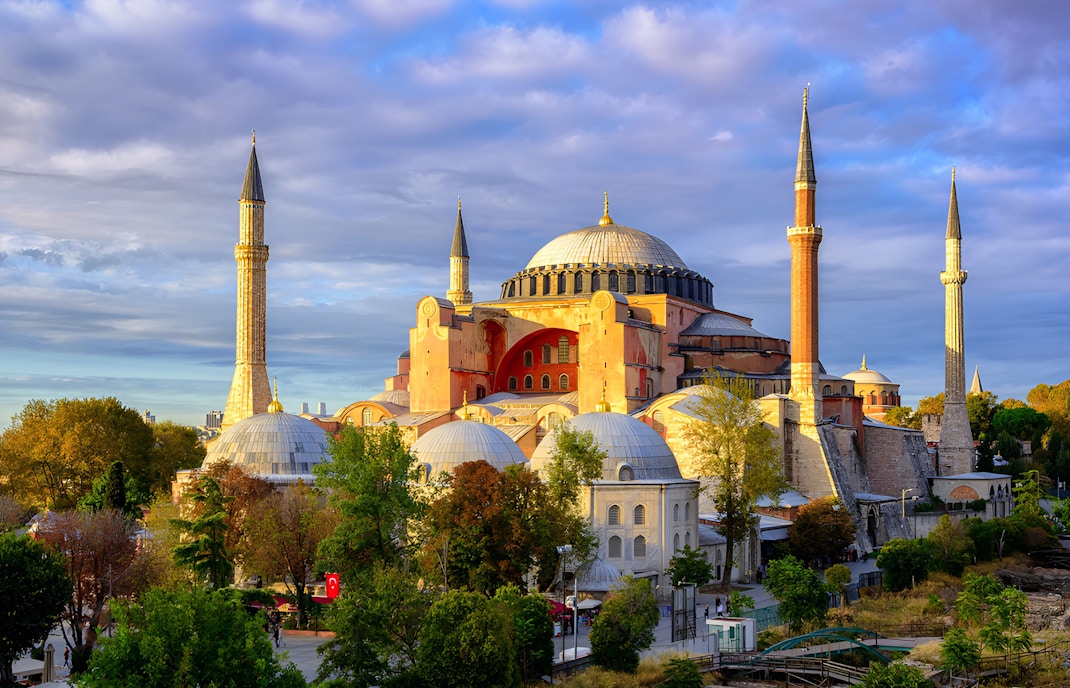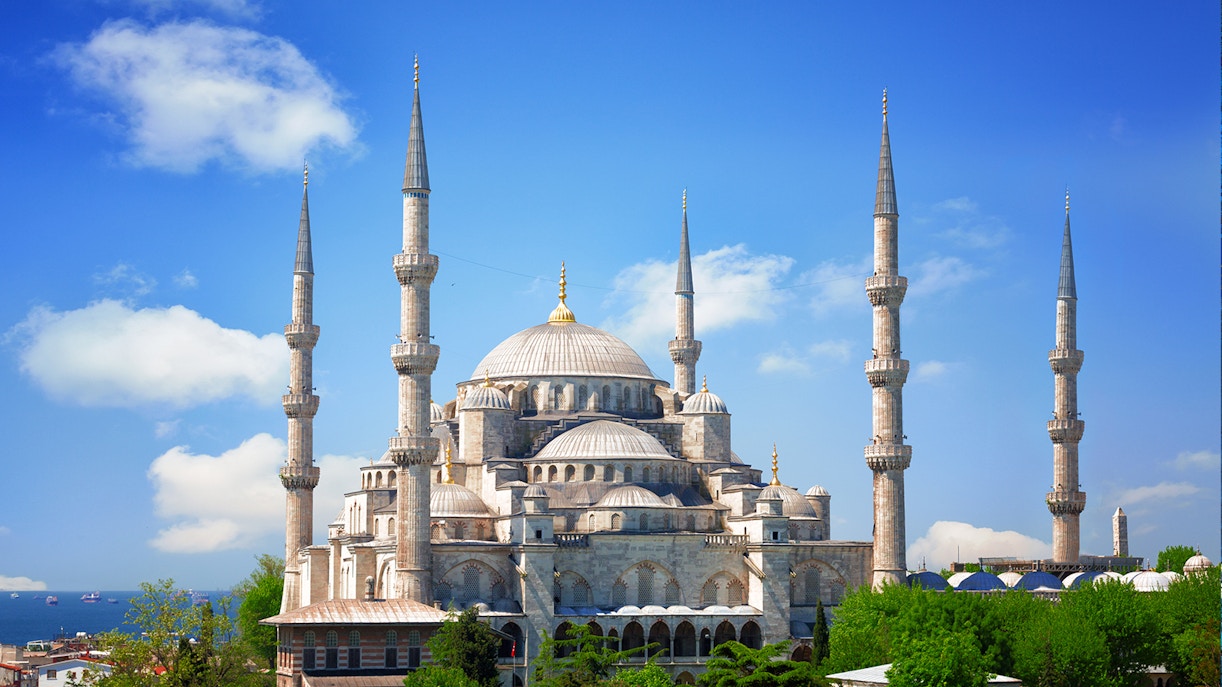Construction of the Blue Mosque
The Blue Mosque’s construction began in 1609 under the reign of Sultan Ahmed I, who envisioned a mosque that would surpass even the Hagia Sophia. The task of designing and constructing this architectural masterpiece fell upon Mehmet Ağa, a renowned Ottoman architect known for his mastery of light, space, and intricate designs.
Mehmet Ağa drew inspiration from a variety of architectural styles, including Byzantine, Seljuk, and Ottoman, to create a unique and harmonious blend. The Blue Mosque took seven years to build and employed thousands of skilled workers.
The interior is adorned with over 20,000 exquisite Iznik tiles, creating a stunning tapestry of blue, green, and turquoise hues. The mosque's central dome, measuring 23.5 meters in diameter and soaring 43 meters high, is a masterpiece of Ottoman engineering. It boasts six slender minarets, a distinctive feature among Ottoman mosques inspired by the Prophet's Mosque in Mecca.
About Blue Mosque's clothing rules





















